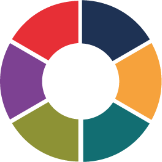In our technological lives, remote working increasingly appears to be the next step for those in the working world. Further to our earlier article, we have written this piece to build on our research and insights regarding remote working and how companies can successfully integrate it into their company Culture.
Due to video conferencing, online calls, share drives, email, etc we no longer need to be tethered to a desk from 9-5 in order to fulfil our job roles. And, moreover, the idea of working at a desk all day isn’t overly appealing to the growing job-seeker market – millennials, the digital natives. In fact, 68% of millennials said that an option to work remotely would greatly increase their interest in a role. But they aren’t alone, 6 in 10 employees want the option to work remotely, with hiring managers expecting 38% of their full-time staff to remotely work within the next decade. However, whilst remote working may be becoming increasingly popular and accessible, it doesn’t mean that it isn’t something to be cautious of. With every pro there often comes a con…
Inevitably, a lack of community and sense of office culture can arise from working at home. Even though the PJs and home comforts may be alluring, working from home may become an isolating experience. It is therefore important to make sure that you have the right technology in place to allow people to best feel a part of the office and its culture – ensure that regular video calls and meetings are offered, if a face-to-face meeting is not possible. Making use of a company intranet platform, create an online social space where employees can engage with each other and include themselves in the company Culture, both in and out of the office.
Productivity is perhaps the biggest concern. With all of the little homely distractions, pets, chores, snacks, Netflix, etc how can you guarantee that you or your employees that days aren’t spent distracted? There are, of course, apps to block distracting websites and play ambient, productivity inducing music. There are also apps and ways of tracking productivity online but how can you ensure that the information is honest? Ultimately it is down to the individual to stay on track and up to you to hire the right individuals who will get the work done whether in the office or remotely working.
Reliability and accountability can also be an issue for employers. If an employee isn’t in the office, how can you make sure that the work is being completed to a high standard? What if you pay a remote worker a retained wage and they never send you any work? Or worse, what happens if they simply disappear? Make sure that there is a two-way system of communication between your leaders and those working out of the office – schedule regular check ins, have an online share drive for the uploading and checking of work or ask them to complete a record of the work they have done in an online daily timesheet.
So, how can PCS help?
At the end of the day, communication is key, and this is where the Performance Climate System (PCS) tool can help you. PCS helps teams understand what is and isn’t working in promoting an optimal climate and identifies gaps in perception between leaders and employees. By completing the survey and acting upon the resulting data, teams can identify potential pain points and work to foster a productive and successful working mentality whether the team is collocated or virtual.
If you believe that your team consists of a mixture of on-site and remote workers, and you could benefit from the PCS tool, then get in touch – email: info@PerformanceClimateSystem.com


